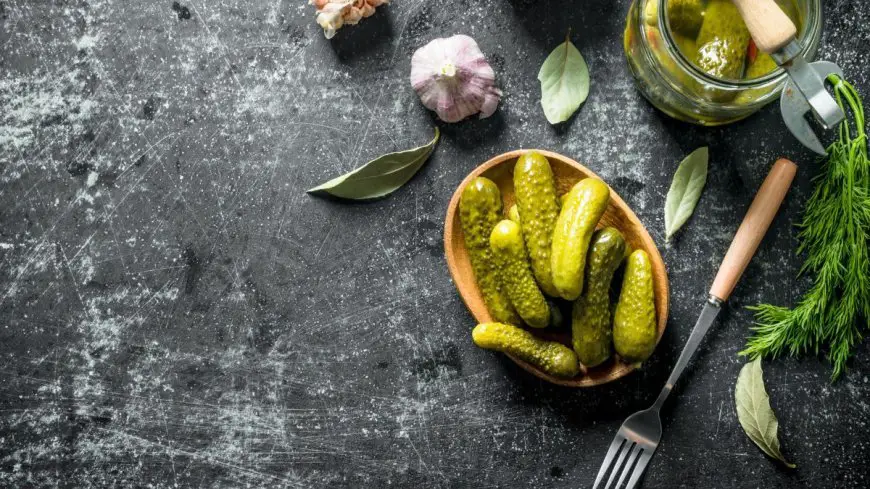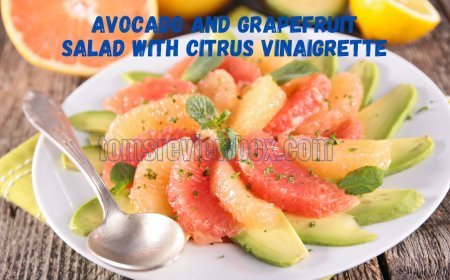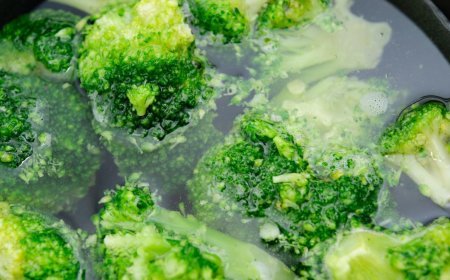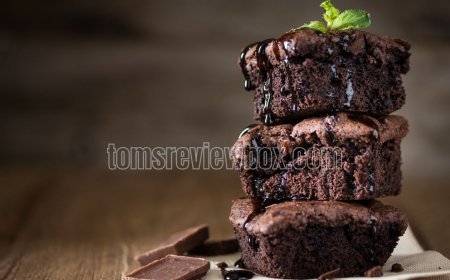Crunchy and Delicious: Your Ultimate Guide to Making Pickled Cucumbers at Home

Are you craving the crisp and tangy flavor of traditional pickles, dill pickles, butter pickles, and sweet pickles? In this guide, we'll show you how to make pickled cucumbers right in your own kitchen. From selecting the freshest cucumbers to mastering the perfect brine, we've got you covered. Get ready to elevate your snacking game with these delicious homemade pickles that are sure to impress your taste buds and guests alike.
Quick Pickles vs Canning
Overview of Methods
Pickling cucumbers offers two main methods: refrigerator pickles and traditional canning. Refrigerator pickles are quick, retaining a fresh crunch. In contrast, traditional canning involves heat processing for long-term storage.
Refrigerator pickles excel in flavor development, as they retain the cucumber's freshness and crispness. On the other hand, canning allows flavors to meld over time, resulting in a more complex taste profile. Each method has distinct steps: refrigerator pickles require simple brining and refrigeration, while canning involves sterilizing jars and water bath processing.
Pros and Cons
Pros: Pickling cucumbers extends their shelf life significantly, providing a tasty treat for months. The process also enhances the flavor of cucumbers, creating tangy, savory snacks perfect for sandwiches or salads.
Cons: One drawback of pickling is the time commitment required for the process. Traditional canning especially demands patience due to the sterilization and processing steps involved.
When comparing homemade pickled cucumbers to store-bought options, homemade varieties often trump their commercial counterparts in terms of taste and quality. Homemade pickles allow customization of flavors like garlic or dill to suit personal preferences. Store-bought versions may lack this flexibility but offer convenience for those short on time.
Crafting the Perfect Brine
Brine Basics
Brine plays a crucial role in the pickling process by preserving and flavoring cucumbers. The basic components of a brine consist of vinegar, water, salt, and various spices.
The vinegar in the brine not only adds a tangy flavor but also helps to extend the shelf life of the pickled cucumbers. It acts as a natural preservative, ensuring that your pickles stay fresh for an extended period.
When crafting your brine, it is essential to maintain the right balance of ingredients. The salt helps to draw out excess moisture from the cucumbers, while spices like dill seeds or mustard seeds enhance the overall flavor profile.
Best Vinegar Choices
For pickling cucumbers, several vinegar options are suitable, including white vinegar, apple cider vinegar, and rice vinegar. Each type of vinegar imparts a unique flavor to the pickles.
White vinegar provides a sharp and clean taste, making it a popular choice for pickling. On the other hand, apple cider vinegar adds a slightly fruity note to the pickles, enhancing their complexity.
Experimenting with different vinegars allows you to customize the flavor of your pickled cucumbers according to your preferences. You can try mixing vinegars or adjusting the ratios to achieve your desired taste profile.
Selecting Cucumbers
Types to Use
When pickling cucumbers, consider options like Persian cucumbers or Kirby cucumbers for their firmness and ideal size. Different from slicing cucumbers, pickling varieties offer a crunchier texture and better absorption of flavors. To select the best cucumbers for pickling, focus on preferences for taste and texture.
- Persian cucumbers: Ideal for pickling due to their thin skin and crisp texture.
- Kirby cucumbers: Known for their small size and bumpy skin, perfect for pickling whole or in slices.
Preparing for Pickling
To prepare cucumbers for pickling, start by slicing them uniformly to ensure even flavor absorption. Optionally, treat the cucumber slices with ice cubes to maintain crispness during the pickling process. Proper preparation is crucial for achieving the desired crunchy texture in your pickles. Salting the cucumbers beforehand can help draw out excess moisture, leading to a firmer pickle.
- Slice cucumbers evenly: Consistent slicing promotes uniform flavor distribution.
- Ice cube treatment: Maintain cucumber crispness by briefly soaking slices in ice water.
- Salting step: Draw out excess moisture from cucumbers before pickling to enhance crunchiness.
Flavoring Techniques
Spice and Herb Guide
In pickling cucumbers, common spices and herbs like coriander seeds, mustard seeds, and dill are popular choices. These ingredients play a crucial role in enhancing the flavor profile of pickled cucumbers. The use of different spices and herbs allows for a diverse range of tastes and aromas in the final product.
Coriander seeds bring a citrusy note, while mustard seeds add a hint of heat. Dill contributes a refreshing, herbal flavor. Combining these elements can result in unique flavor combinations that cater to various preferences. For example, adding garlic cloves can introduce a savory undertone to the pickles.
Creating unique flavor combinations is an exciting aspect of pickling cucumbers. By experimenting with spices and herbs, individuals can tailor the taste of their pickled cucumbers to suit their liking. For a zesty kick, jalapenos or green onions can be incorporated into the brine mixture. Adjusting the quantity of spices and herbs enables customization according to personal taste preferences.
Customizing Flavors
Encourage creativity by suggesting different ways to customize the flavors of pickled cucumbers. Adding ingredients such as garlic, jalapenos, or green onions can elevate the taste profile and introduce new dimensions of flavor. Varying the amount of spices and herbs used in the pickling process can significantly impact the overall taste experience.
Experimentation is key when it comes to customizing flavors in pickled cucumbers. By tweaking ingredients and quantities, individuals can create unique recipes that reflect their palate preferences. Personalization allows for a tailored culinary experience that caters to specific tastes and preferences.
Step-by-Step Pickling
Preparing Ingredients
To pickle cucumbers, gather cucumbers, vinegar, salt, and spices. Fresh and high-quality ingredients are key for optimal results. Ensure everything is ready before starting.
List:
- Cucumbers
- Vinegar
- Salt
- Spices
When pickling cucumbers, the quality of ingredients plays a significant role in the final taste. Fresh cucumbers will result in a crunchier texture, while high-quality vinegar and spices enhance flavor.
Mixing the Brine
Create the brine by combining vinegar, water, salt, and spices in a pot. Simmering the brine allows flavors to blend well. Adjust the brine to achieve the desired tanginess and sweetness levels.
List:
- Vinegar
- Water
- Salt
- Spices
Simmering the brine is crucial as it helps meld all the flavors together. The right balance of tanginess and sweetness can be achieved by adjusting the ingredients accordingly.
Jar Filling Tips
When filling jars with cucumbers, herbs, and spices, ensure even distribution. Tightly packing ingredients maximizes flavor infusion. Layering ingredients not only enhances visual appeal but also balances flavors.
List:
- Cucumbers
- Herbs
- Spices
Tightly packing ingredients ensures that the flavors penetrate each cucumber slice uniformly. Layering cucumbers with spices and herbs creates a visually appealing jar of pickles.
Expanding Beyond Cucumbers
Versatile Veggies
When it comes to pickling, exploring beyond cucumbers opens up a world of possibilities. Carrots, red onions, and green beans are excellent choices for pickling alongside cucumbers. These vegetables offer diverse textures and flavors that can enhance your pickling experience.
Differences exist when pickling various vegetables compared to cucumbers. While some veggies may require longer brining times, others might need different seasoning combinations. Experimenting with different vegetables allows you to discover unique flavor profiles and create exciting culinary combinations.
For those looking to broaden their pickling horizons, trying out new vegetables can be a fun and rewarding experience. By venturing beyond cucumbers, you can unleash your creativity in the kitchen and impress your taste buds with an array of tangy, crunchy delights.
Adjusting Brine Strength
To achieve the perfect balance of flavors in your pickled veggies, it's essential to understand how to adjust the strength of the brine. By varying the vinegar to water ratio, you can control the acidity levels in the brine, impacting the overall taste of your pickles.
The addition of sugar plays a crucial role in balancing the strength of the brine. Sugar not only enhances the sweetness of the pickles but also helps counteract the sharpness of vinegar, providing a well-rounded flavor profile. Experimenting with different sugar quantities allows you to customize the brine according to your preferences.
Fine-tuning the brine is key to achieving pickles that suit your taste buds perfectly. Whether you prefer a more tangy or slightly sweeter flavor profile, adjusting the brine strength enables you to create pickled vegetables tailored to your liking.
Storing Your Pickles
Container Options
When storing homemade pickles, consider using wide-mouth jars or glass containers for convenience. These options make it easier to reach into the container and retrieve your pickles without hassle. Airtight containers are crucial for maintaining the freshness of your pickles by preventing air exposure, which can lead to spoilage. Labeling your containers with dates and ingredients is essential for tracking freshness and identifying different types of pickles easily.
Shelf Life Tips
Pickled cucumbers stored in the fridge with their brine typically have a shelf life of several months. To extend this shelf life, ensure that the containers are tightly sealed to prevent air from entering and causing the pickles to spoil prematurely. Proper refrigeration at a consistent temperature is key to preserving the quality of your pickles over time. Be vigilant for signs of spoilage such as mold, off odors, or unusual textures, as these indicate that the pickles are no longer safe to consume.
Quick Pickle Recipe
Ingredients Overview
To make pickled cucumbers, you will need a few key ingredients. Firstly, cucumbers are the star of the show, providing that crunchy texture. Vinegar acts as the preserving agent, keeping your pickles fresh. Salt not only enhances flavor but also helps with preservation. Finally, spices such as dill, garlic, or peppercorns add depth and complexity to the pickles' taste.
rcing high-quality ingredients is crucial for successful pickling. Fresh, firm cucumbers are ideal for pickling, while opting for high-grade vinegar ensures proper preservation. Using pure sea salt without additives is recommended for the best flavor. When selecting spices, choose whole spices over ground ones for more intense flavors in your pickles.
Simple Instructions
- Prepare Your Cucumbers: Wash and slice your cucumbers into spears or rounds.
- Create Your Brine: In a saucepan, combine water, vinegar, salt, and sugar over medium heat until dissolved.
- Add Flavor: Add spices like dill seeds, garlic cloves, or mustard seeds to the brine for extra flavor.
- Pack the Jars: Place cucumber slices into sterilized jars and pour the hot brine over them.
- Cool and Seal: Let the jars cool before sealing them tightly with lids.
- Refrigerate or Can: Refrigerate for quick pickles or follow proper canning procedures for long-term storage.
For beginners, start with small batches to practice your pickling skills before moving on to larger quantities. Experiment with different spice combinations to find your favorite flavor profile. Remember that patience is key in pickling; allowing the flavors to develop over time will result in tastier pickles.
Engaging the Community
Comment Section
Encourage readers to share their experiences and tips for pickling cucumbers in the comment section. Invite feedback and questions from readers to foster engagement and community interaction. Monitor and respond to comments to create a supportive and interactive platform for pickling enthusiasts.
Sharing Recipes
Share additional pickled cucumber recipes featuring unique flavor combinations and ingredients. Provide links to related articles or resources for readers interested in exploring more pickling recipes. Encourage readers to share their favorite pickled cucumber recipes with friends and family.
Summary
Crafting the perfect pickled cucumbers involves understanding the nuances of quick pickling versus canning, selecting the right cucumbers, perfecting your brine, and experimenting with flavor combinations. By following the step-by-step guide provided and exploring variations beyond cucumbers, you can create delicious pickles to share with your community. Remember to store your pickles properly to enjoy them for longer periods.
Now that you have the tools to pickle like a pro, it's time to roll up your sleeves and start experimenting in your kitchen. Don't be afraid to try new ingredients or techniques to personalize your pickles. Share your creations with friends and family, and let the joy of homemade pickles bring everyone together.
Frequently Asked Questions
How do quick pickles differ from canning?
Quick pickles are made by soaking vegetables in a vinegar solution for a short period, providing a faster way to enjoy pickled flavors. Canning involves a more complex process of preserving food in sealed jars through heat processing, suitable for long-term storage.
What are the benefits of crafting the perfect brine?
Crafting the perfect brine ensures a balanced flavor profile for your pickled cucumbers. The right combination of vinegar, water, salt, and sugar enhances the taste and texture of the cucumbers, creating a delicious and satisfying snack or condiment.
How do I select the best cucumbers for pickling?
Choose firm, unwaxed cucumbers with thin skins for optimal pickling results. Pickling cucumbers like Kirby or Persian varieties work well due to their crisp texture and small seeds. Ensure they are fresh and free from blemishes to achieve the best flavor and crunch in your pickles.
What are some creative flavoring techniques for pickled cucumbers?
Experiment with adding spices like dill, garlic, mustard seeds, or red pepper flakes to infuse unique flavors into your pickles. You can also explore using different types of vinegar or incorporating herbs like mint or basil for a refreshing twist on traditional pickled cucumber recipes.
Can you provide an overview of the step-by-step pickling process?
- Wash and slice cucumbers.
- Prepare brine solution.
- Pack cucumbers into jars with desired flavorings.
- Pour brine over cucumbers.
- Seal jars and refrigerate (for quick pickles) or follow canning instructions for long-term storage.
- Allow flavors to develop before enjoying your homemade pickles.
How can I store my pickles properly?
Store homemade pickles in clean, airtight containers in the refrigerator for quick pickles or follow proper canning procedures for shelf-stable options. Keep them away from direct sunlight and extreme temperatures to maintain their quality and flavor over time.
Is there a quick pickle recipe I can try?
For a simple quick pickle recipe:
- Slice cucumbers thinly.
- Combine equal parts water and vinegar with salt and sugar to taste.
- Add dill seeds, mustard seeds, and garlic cloves.
- Pour mixture over cucumbers.
- Refrigerate for at least 1 hour before serving delicious homemade quick pickles.
Engaging the Community To further enhance your experience with making pickled cucumbers, consider sharing your recipes, tips, and experiences with fellow pickle enthusiasts in online forums or social media groups dedicated to food preservation. Engage in discussions, seek advice, and inspire others with your creativity in pickle-making endeavors!
What's Your Reaction?







































![MacBook Pro M5: All the features and specs you need to know [LEAKS REVEALED]](https://tomsreviewbox.com/uploads/images/202502/image_430x256_67bd6d7cd7562.jpg)



























